On a secluded trail in the Gila National Forest, I could see 10,895-foot Whitewater Baldy shimmer in the distance. The highest peak in southwest New Mexico’s Mogollon Range, it was still capped with snow in early March. The plan was to summit an adjacent mountain for what seemed like a short but rewarding day hike in pleasant weather. After rounding a bend roughly a mile in, a washout stopped me. As far as I could see up or down the slope, there was no way across other than scrambling through unstable dirt and scree.
Walking back, I checked the trail log to find that my roadblock had been there for more than a year. I counted how many times I had been in a similar situation within the 3.3 million-acre forest—three in as many days. This issue isn’t exclusive to this forest or New Mexico. All across America, backcountry access on our public lands has dwindled for quite some time, due in large part to poorly maintained trails.
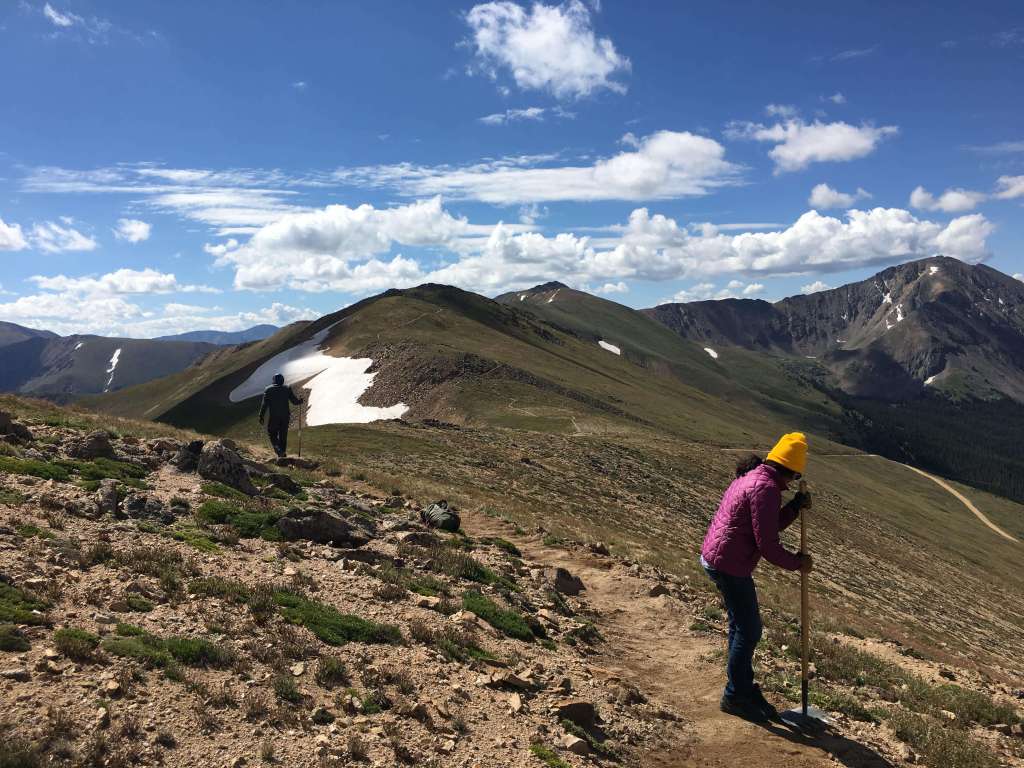
A volunteer works on a section of the Continental Divide Trail near Jones Pass in Colorado. (Photo Credit: Chad Angell)
The U.S. Forest Service estimates only around 25 percent of its trails are easily accessed and kempt enough for the public, which leaves the rest to be reclaimed by nature and impacted by use. That’s most notably due to a more than $300 million trail maintenance backlog—caused in part by borrowing money dedicated to trail maintenance for wildland firefighting. Last year, the agency spent more than half its total budget on wildfire suppression, totaling more than $2 billion.
However, recent legislation could create some big changes to our trail systems. When Congress passed the National Forest System Trails Stewardship Act of 2016, it tasked the USDA to designate priority areas in national forests that are in need of trail work. While there’s no funding affiliated with the designations, within these priority areas officials will work toward addressing the maintenance backlog with the help of partners and volunteers. In February, the U.S. Secretary of Agriculture Sonny Perdue announced the locations of these 15 priority areas.
Priority Areas
- Bob Marshall Wilderness Complex and Adjacent Lands, Montana
- Methow Valley Ranger District, Okanogan-Wenatchee National Forest, Washington
- Hells Canyon National Recreation Area and Eagle Cap Wilderness, Idaho and Oregon
- Central Idaho Wilderness Complex, Idaho and Montana
- Continental Divide National Scenic Trail, Montana, Idaho, Wyoming, Colorado and New Mexico
- Wyoming Forest Gateway Communities
- Northern California Wilderness, Marble Mountain and Trinity Alps
- Angeles National Forest, California
- Greater Prescott Trail System, Arizona
- Sedona Red Rock Ranger District Trail System, Coconino National Forest, Arizona
- Colorado Fourteeners
- Superior National Forest, Minnesota
- White Mountain National Forest Partner Complex, Maine and New Hampshire
- Southern Appalachians Capacity Enhancement Model, Alabama, Georgia, Tennessee, North Carolina, South Carolina and Virginia
- Iditarod National Historic Trail Southern Trek, Alaska
On the heels of the designations, President Trump signed into law a $1.3 trillion spending bill, part of which changed the way wildland firefighting is funded. The bill helps to avoid “fire borrowing,” treating large-scale wildfires as other natural disasters by opening the $2.25 billion emergency fund that the agency can access starting in 2019. This will help keep in place money that’s allocated to trails.
“Now, money won’t be pulled from trail stewardship and maintenance midyear. [You’ll] have more assurances that you have good access and decent facilities where you do recreate,” National Forest Foundation President Mary Mitsos told the Co-op Journal in March.
The 2016 legislation also called for the Forest Service to “significantly increase the role of volunteers and partners in trail maintenance,” which will fill the gap in the lack of federal trail crews. The goal is to make partnering with volunteers more efficient and, within the next five years, double the number of volunteers working in our forests. While once volunteers were only meant to augment government workers, the Forest Service is hoping that they will now play a key role in maintaining trail systems.
Michelle Mitchell, the partnership, volunteer and service programs manager with the U.S. Forest Service’s Southern Region, says the designations are about more than budgets or personnel. She believes the public is inherently tied to the land, and as an example, she points to Appalachia’s cultural and historical ties to the Civilian Conservation Corps, which built shelters and trails during the Great Depression.
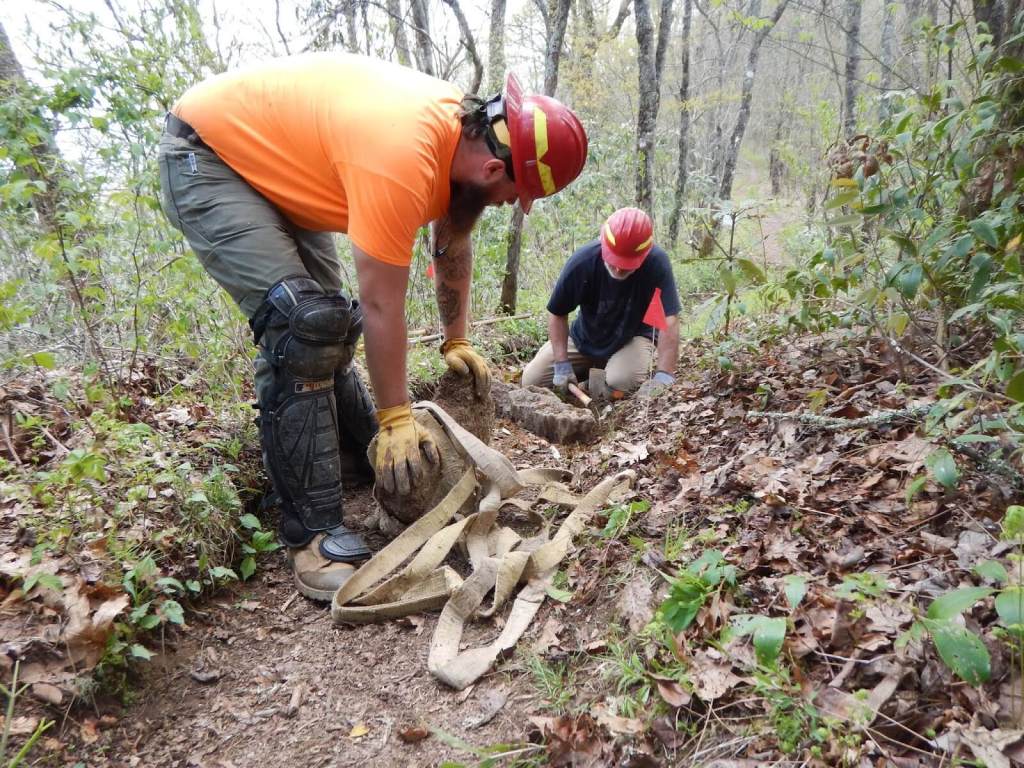
Many of the trails that snake through Appalachia were first created by the public during the 1930s by the Civilian Conservation Corps. Now, that lineage continues as volunteers will begin to play a larger role in trail maintenance. (Photo Credit: Appalachian Trail Conservancy)
“These are lands where people have always participated in management,” she says. “We are coming at this from a place of value, where we recognize that the American people own this landscape and people are uniquely connected to it in a very emotional, long-standing way. We believe it is the right of the American people to participate in the management of the land and our job to give them the opportunity to participate.”
Secretary Perdue named Mitchell’s region in Appalachia a priority area. The designation, which stretches from Alabama to Virginia, encompasses more than 6,300 miles of trails—some of the most heavily used in the country. This includes footpaths like the Appalachian Trail and Benton MacKaye Trail. However, only 28 percent of trails in the region meet or exceed agency standards.
Mitchell says she recognizes the enormous task at hand, but also the immense opportunity to get people involved. This summer, her region is seeking to hire six staff members, half of whom will work within the Forest Service and the other half with Greening Youth Foundation, a partner of the agency; these hires will be solely dedicated to engaging volunteers. “When those folks are on board, we expect them to incubate new partnerships and strengthen existing ones,” she says. “We want to build relationships that enable volunteers to have a really good experience with us.”
Much of the Forest Service’s trail work following Secretary Perdue’s announcement won’t commence until 2019, as the agency has already planned ahead for this fiscal year. For now, land managers are mostly preparing for the increase in volunteers and shoring up partnerships.
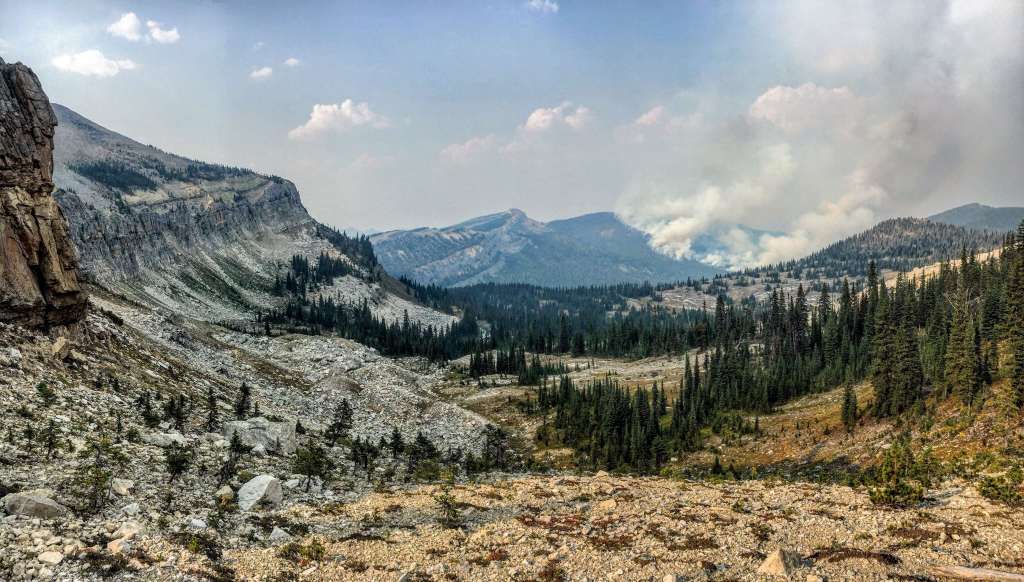
Just one of the awe-inspiring views along the Continental Divide Trail, taken in the secluded Bob Marshall Wilderness in Montana. (Photo Credit: Matt “Sheriff Woody” Berger)
However, on the 3,100-mile Continental Divide Trail (CDT), another priority area, land managers are making plenty of headway in advance of the next fiscal year. “I moved some funds around to crank out some necessary trail work on a very remote section of the trail in the San Juan National Forest,” says Brenda Yankoviak, the CDT trail administrator for the USFS. “We are starting other projects this year, just not as many nuts-and-bolts, on-the-ground projects. The Continental Divide Trail Coalition (CDTC) is a key partner helping to implement those actions.”
The CDTC is a nonprofit that’s partly funded by the Forest Service through a cost-share agreement. Part of its role is to promote trail stewardship, but also to work with the Forest Service to gather volunteers to maintain sections of the CDT. “We’re an example of how these public-private partnerships can work,” says Amanda Wheelock with the CDTC. “We work with the Forest Service or the Bureau of Land Management, let them know we have so many volunteers to do a project, and then we show up and do the work really well.”
The CDTC is spending the summer training volunteers to perform maintenance work on the trail. Wheelock says although there’s no funding affiliated with the legislation, it will be a useful tool for her organization. “Now, when the Forest Service is looking to spend money they have allocated for trail maintenance, we have a good way to say that our trail is important—then we can help mobilize volunteers,” she says.
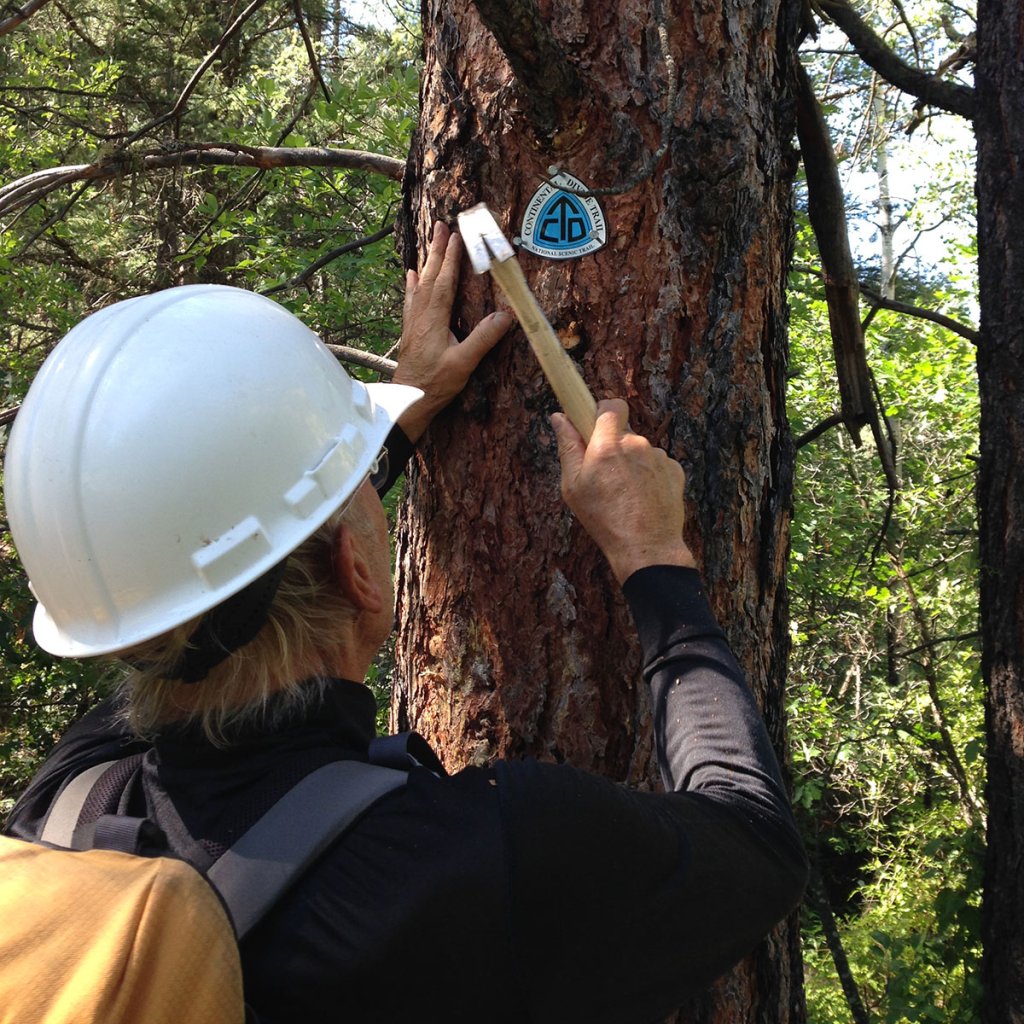
The Continental Divide Trail Coalition is working to blaze the rest of the 3,100-mile route this summer with the help of volunteers. (Photo Credit: Chad Angell)
This year, around 100 volunteers will participate in the Blaze the CDT program, an effort to secure trail signs along the unblazed portions of the CDT by the end of the year—some 750 miles. (REI is helping to fund this project along with the U.S. Forest Service, Osprey and PPM, a printing company.) The CDTC hopes to put up around 10,000 signs attached to posts and trees.
2018 also marks a significant milestone for the CDT, as it’s the 40th anniversary of the trail. We’re also celebrating the 50th anniversary of the National Trails System Act of 1968. Many beloved long-distance hikes are protected under this legislation, which now totals more than 1,000 footpaths that created National Scenic Trails, National Recreation Trails and Connecting and Side Trails—that was later expanded to include National Historic Trails.
In honor of the trail’s anniversary, the CDTC hopes to grow its Trail Adopter program by 25 percent. It allows individuals or organizations to adopt sections of the CDT, survey their section for any renovations that may be needed and perform minimal maintenance along the way. Big Agnes already adopted 75 miles near its headquarters in Steamboat Springs, Colorado. “There are so many employees that use it to bike or hike,” says Garett Mariano, Big Agnes’s marketing director. “We felt that it was important to stand up and maintain an area we are passionate about.”
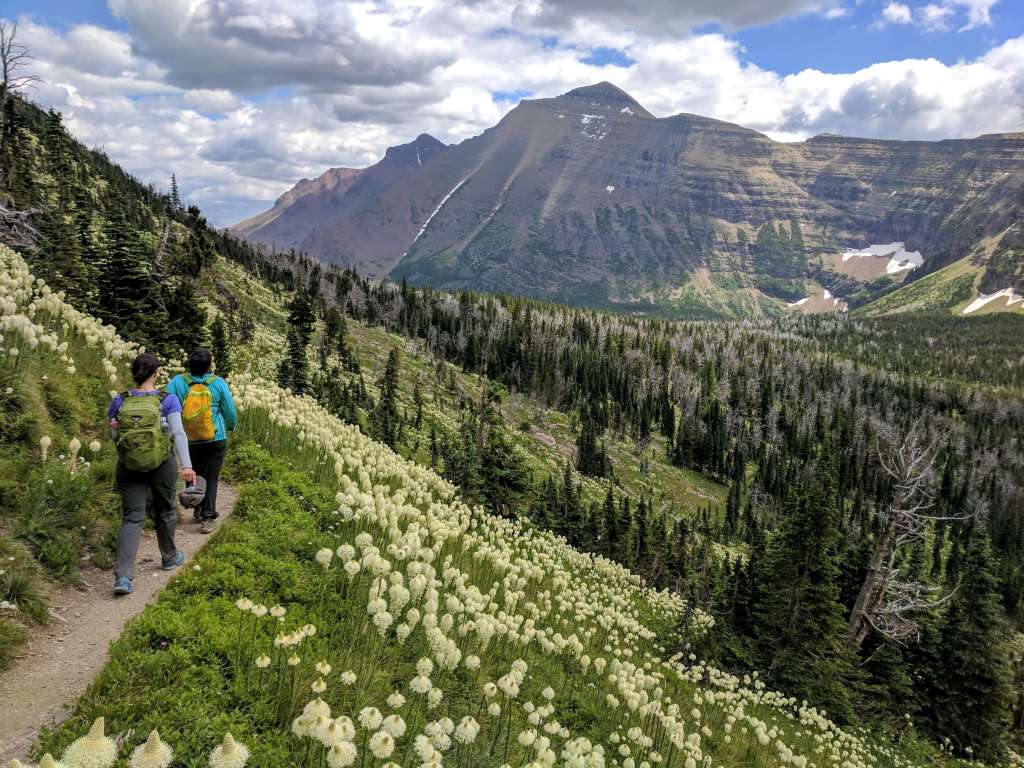
The partnerships between the agencies in charge of managing public lands and organizations that mobilize volunteers are important to making progress on the priority areas. Pictured here are CDTC Executive Director Teresa Martinez and CDT Administrator (USFS) Brenda Yankoviak hiking in Glacier National Park. (Photo Credit: Guthrie Alexander)
These partnerships that exemplify deep connections to the land and a feeling of responsibility to care for it are the sort the Forest Service is aiming to continue to build with the help of partners, with the hope of chipping away at the backlog while continuing to spur economic growth. The Outdoor Industry Association estimated that in 2016, outdoor recreation was valued at $887 billion and it supported 7.6 million jobs. From that figure, $201 billion came directly from trail recreation.
“The impact of hikers—economic and awareness of our trails—adds up to be pretty significant,” says Chris Schlabach, co-owner of Gila Hike and Bike in Silver City, New Mexico, just south of the Gila National Forest. Although the CDT is close by, the small ranching town is known better as the old stomping grounds of Billy the Kid than as a hub for outdoor recreation. But Schlabach says that’s slowly changing, and his town is an example of how trails can breathe new life into a community.
In 2014, Silver City became the first CDT Gateway Community, a designation that highlights a town’s commitment to providing an inviting environment to hikers. After launching its first Trail Days festival four years ago, the town has enjoyed an economic bump each spring when thru-hikers trickle in. Schlabach says residents are welcoming these changes with open arms.
“Thru-hikers stay in hotels, go to restaurants, and there are more events centered on the trail,” he says. “But the real impact is there are more people out on the trail and more volunteers. And because of the publicity the CDT has gotten, that has created local awareness for our public lands.”
Perhaps in a few years, I’ll revisit that spot in the Gila’s forest and the washout won’t be there. I’ll get to the end and soak in that view I was told by locals was breathtaking. The folks with the power to enable that change have not only taken notice but have taken action. It’ll take work on everyone’s part, land managers and outdoor enthusiasts, to see it through. But the ball is in the outdoor community’s court and the momentum is with us.


